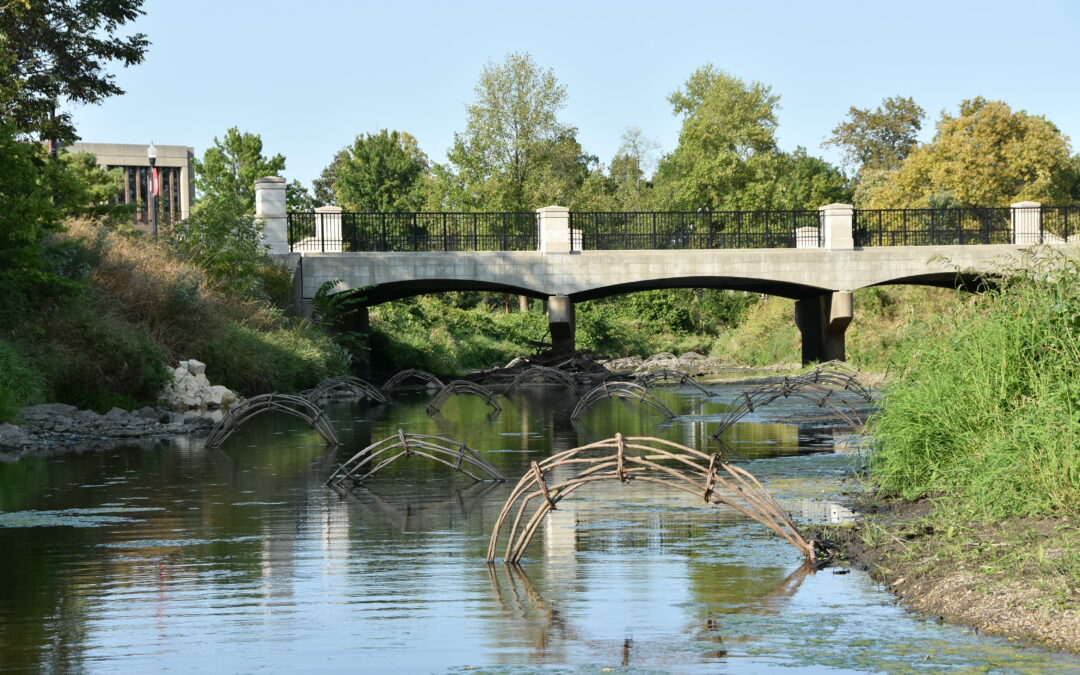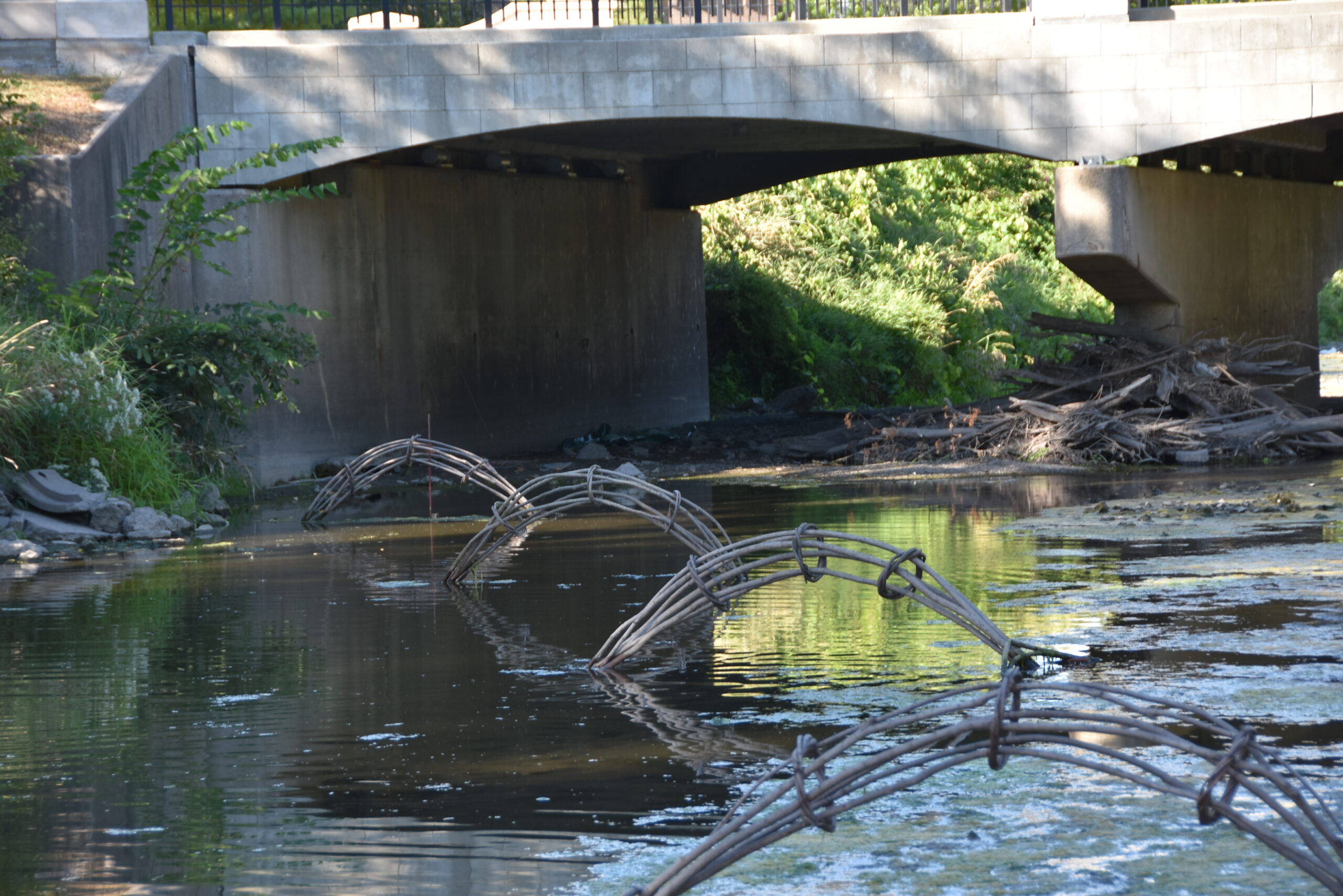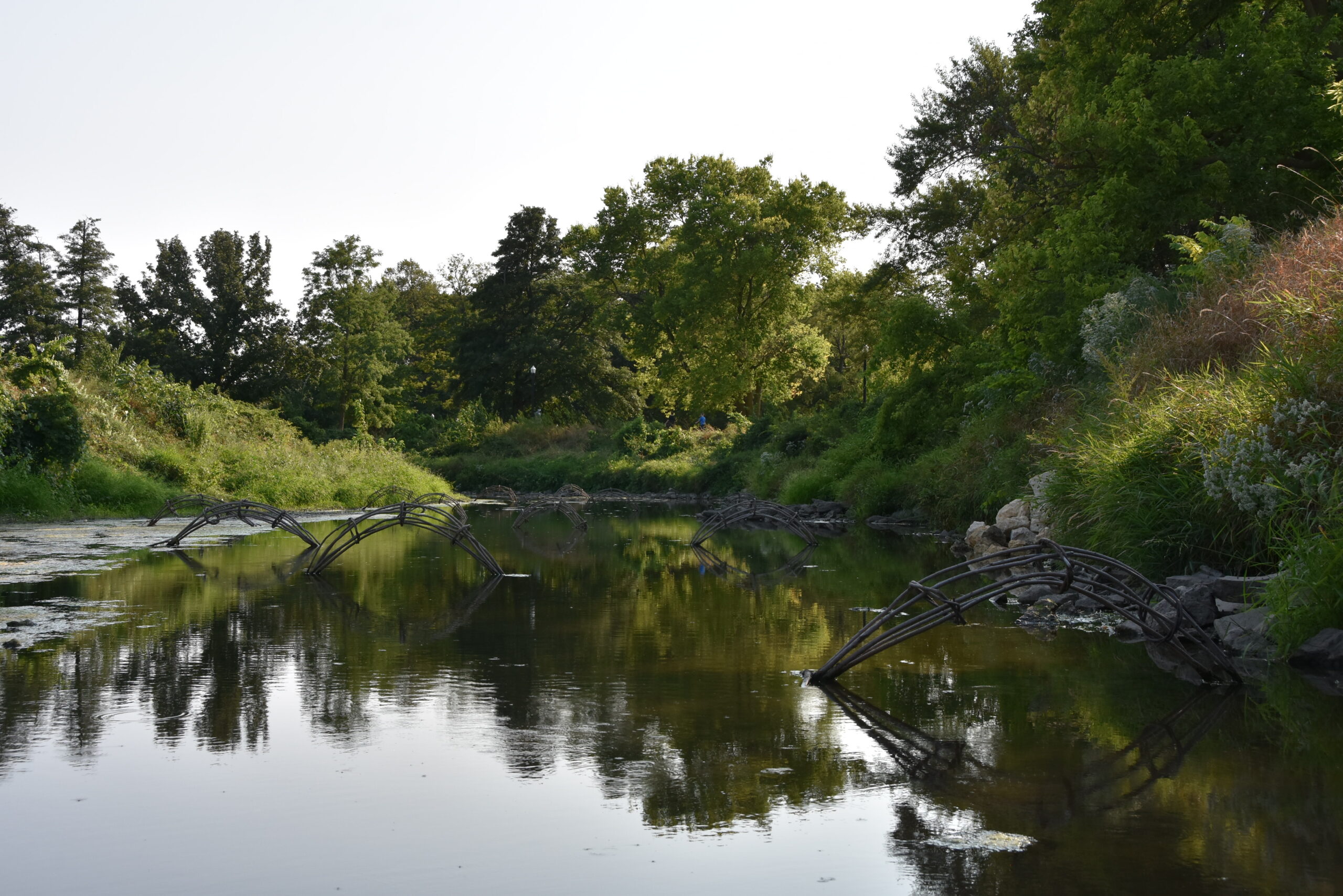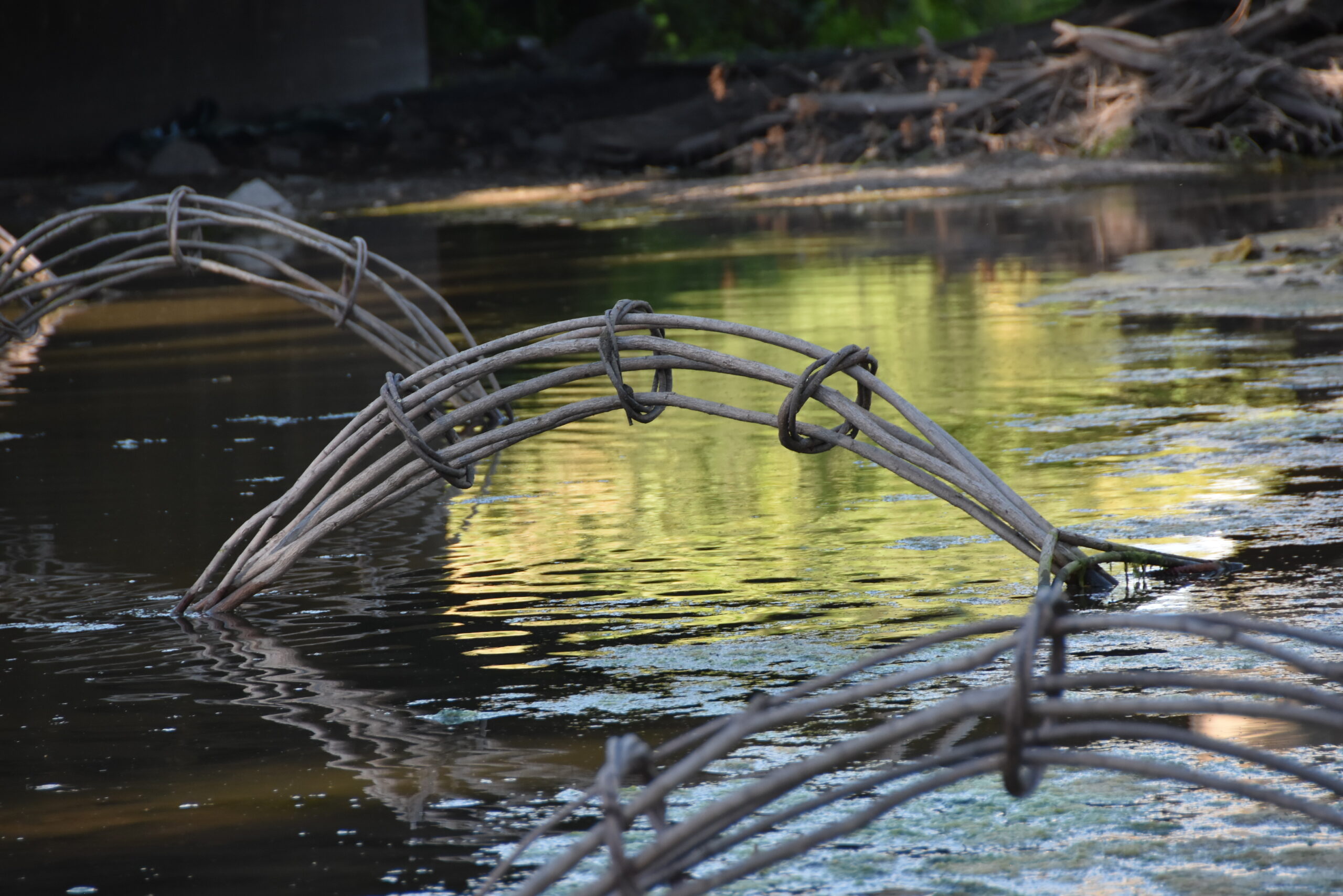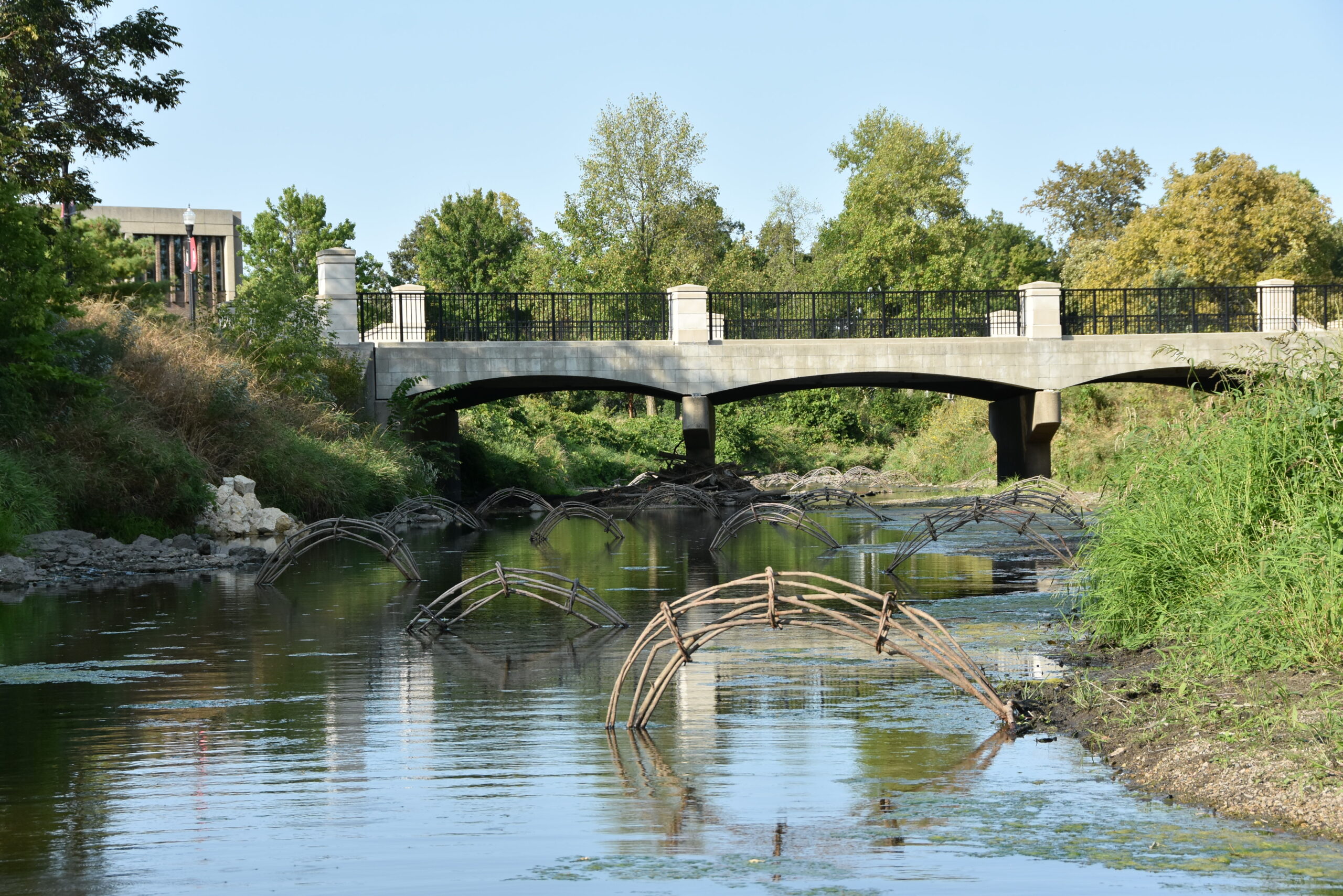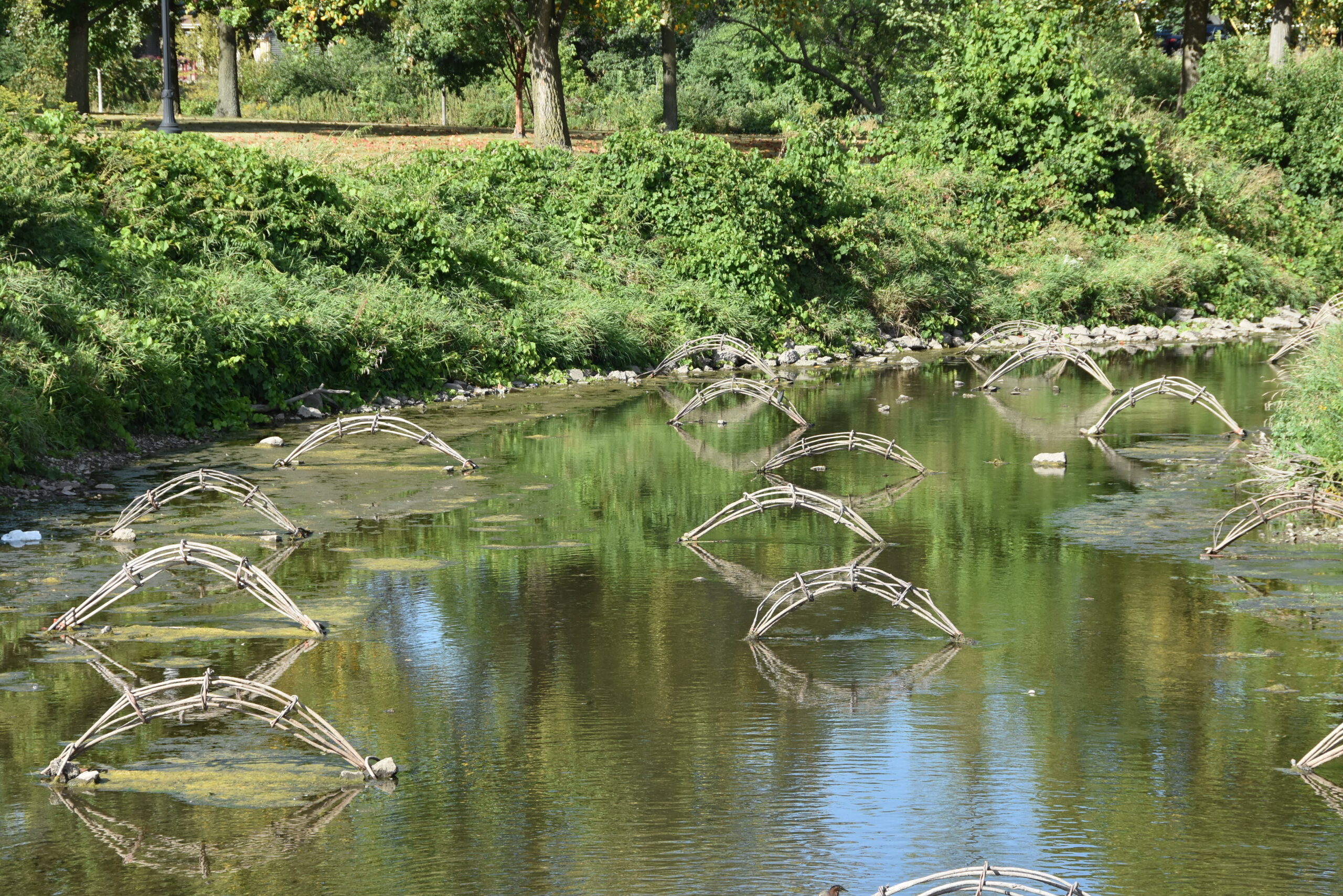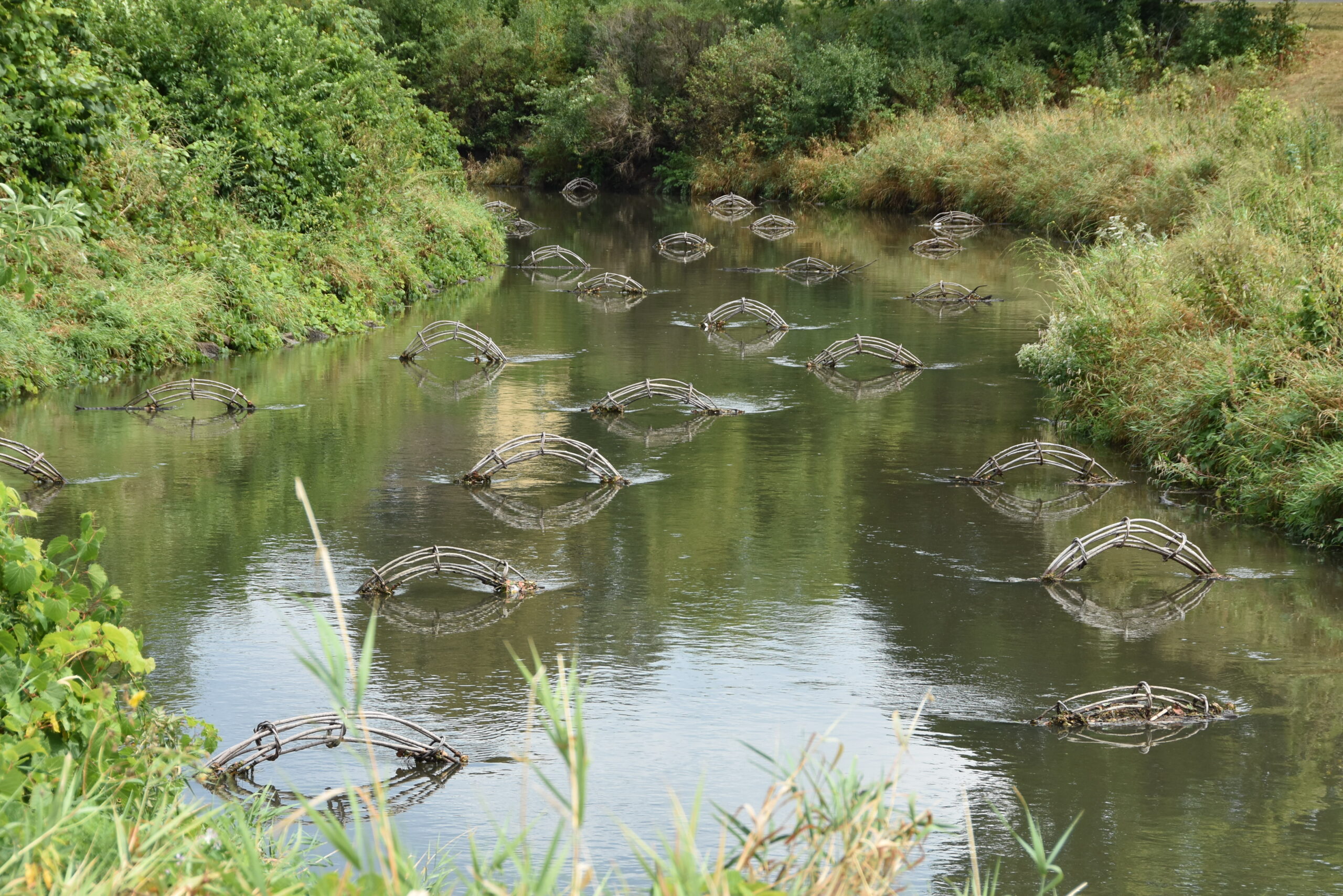UPDATE: The River Weaving walking tour has been rescheduled for two dates, Saturday, October 3 and Sunday, October 11. Both will be held at 2 p.m. and attendees can pre-register for free at go.niu.edu/riverweaving. The walking tour and discussion will begin at the “River Weaving” site on the College Street bridge near the east side of the Music Building.
Thirty-four years ago, John Siblik was an NIU art student drawing up a concept for an environmental sculpture to be placed in the Kishwaukee River where it flows past the lagoon and the Music Building. Now, Siblik finds himself standing in that same river, in that same spot with a team of students and alumni installing that very same artwork.
Siblik is an associate professor in the School of Art and Design where he earned his Bachelor of Fine Arts and a Bachelor of Science in Art Education, and this is the sixth time he’s created and installed a version of this project. It is the second time in Illinois. The first was in Lockport’s I&M canal in 2014. But this current version is particularly special. “River Weaving” is part of NIU’s 125th Anniversary year-long celebration, and a chance for Siblik to complete the vision he first had in 1986.
“The project commemorates the Kishwaukee River as an important feature of the landscape that helped influence state officials to select DeKalb as the site for NIU prior to its founding in 1895,” Siblik says. “Earl W. Hayter, in his history of Northern Illinois University ‘Education in Transition’ tells a wonderful mythic tale of the residents of DeKalb going without water for two days so that the city’s water supply could be diverted into the Kish and have it appear to the commissioners that the Kish was in fact a mighty river. For those of us that are alumni of NIU it’s been stated that if you dip your toe in the Kish you will never leave, at least in our hearts.”
The installation features 90 elements placed in the water made of willow, steel and stone. Each is six to eight feet in length and placed onto a base that is four feet wide and two to four feet tall. The design is flexible and portable to adapt to different rivers, and strong enough to hold up to flooding and currents.
“The most basic way to think about this piece of environmental art is that it is weaving as sculpture,” Siblik said. “The wood elements make the warp and water flows through and creates the weft, and that’s what makes ‘River Weaving’ a fitting title. The environmental significance is that the piece reminds the viewer that we cannot think of the environment as disconnected from ourselves. It serves as a reminder that all aspects of nature and society are connected and interwoven.
“As the water level in the river rises, “River Weaving” is activated and serves as a filter collecting litter and debris. Some of the items collected so far include a mattress, tire, shoe, fishing pole, COVID-19 mask, as well as several bags, wrappers, bottles, and cans., It starts as a beautiful, elegant sculpture. Then, after a heavy rain, River Weaving reveals that we dump too much trash into the water.”
But while installing the sculpture in the Kishwaukee River, Siblik said he was encouraged. “The water quality appears to be improving, and we found delicate arrowroot plants, crayfish and mussels, signs of a healthy waterway.”
His team includes Myel Simmons, an NIU art student and illustrator who is serving as the project manager, Jose Vazquez, an environmental science major, and business student Jared Norton.
There are also three alumni helping with the project. Arin Whitmore is a 2020 BFA drawing graduate, Mark Mattson, who earned his bachelor’s and master’s in English from NIU is the business development manager at Creative Therapeutics in DeKalb, and Ken Olson holds a degree in physical therapy from NIU and is a physical therapist and principal partner with Northern Rehab in DeKalb.
Support for the project has come from the NIU 125th Anniversary Committee, as well as material support from local businesses. Dimco Steel and Metal in DeKalb donated more than 3,000 pounds of rebar. Wagner Aggregate provided more than 14,000 pounds of locally sourced limestone from a quarry in Fairdale which is used to weigh down the sculptures, and R&B Services in DeKalb hauled and delivered the stone.
Siblik estimates the sculpture installation will be in place until Oct 15, 2020, depending on weather.

